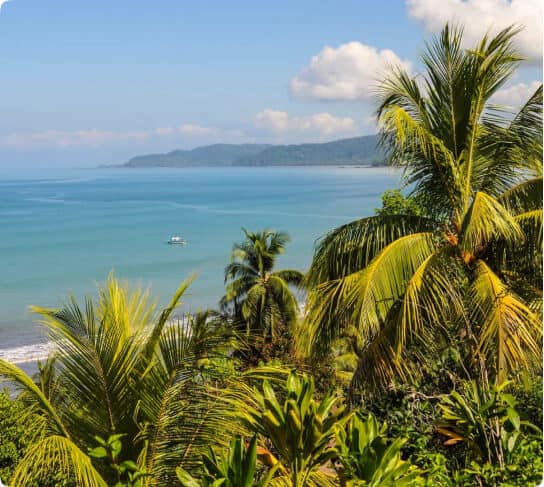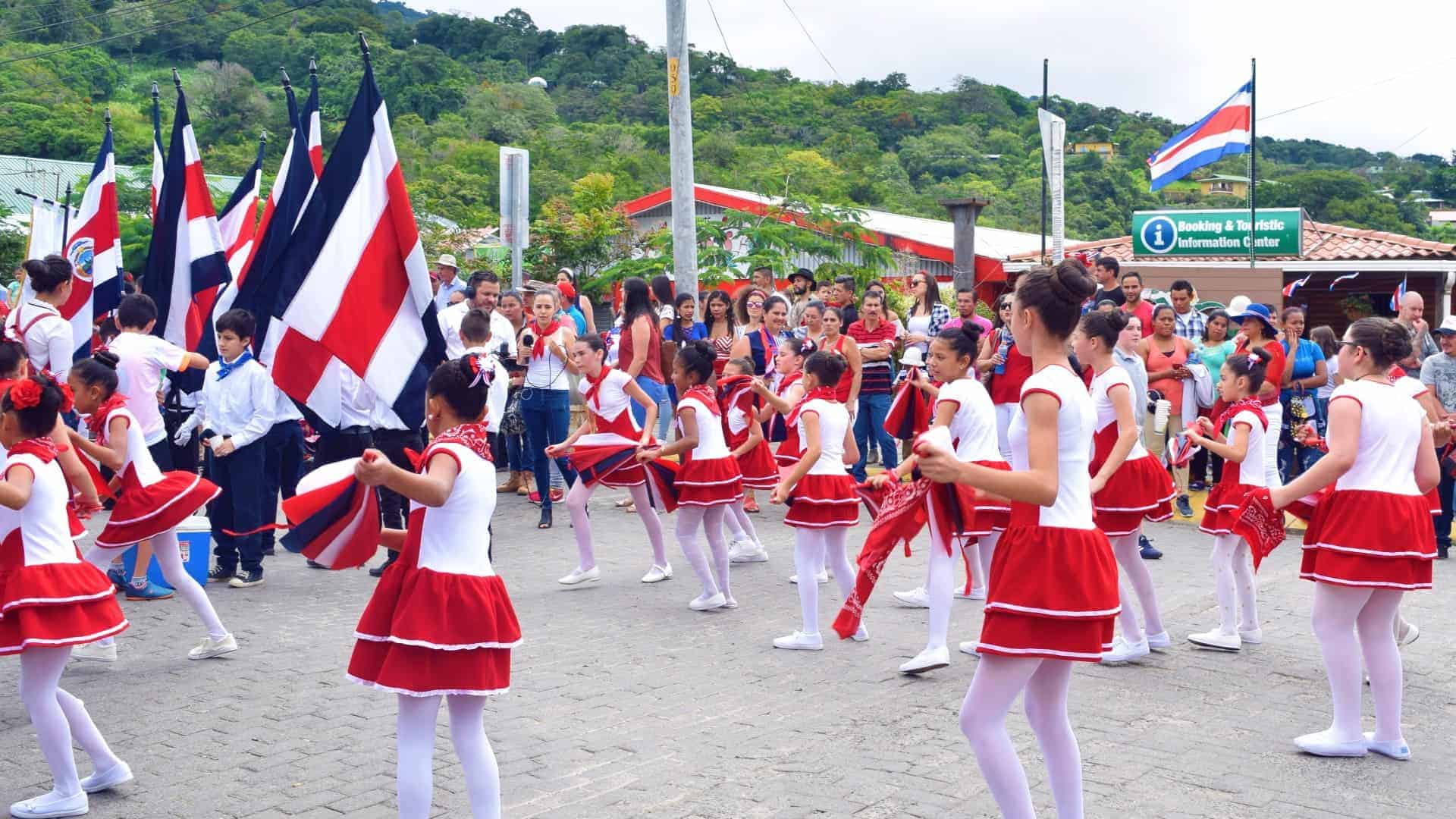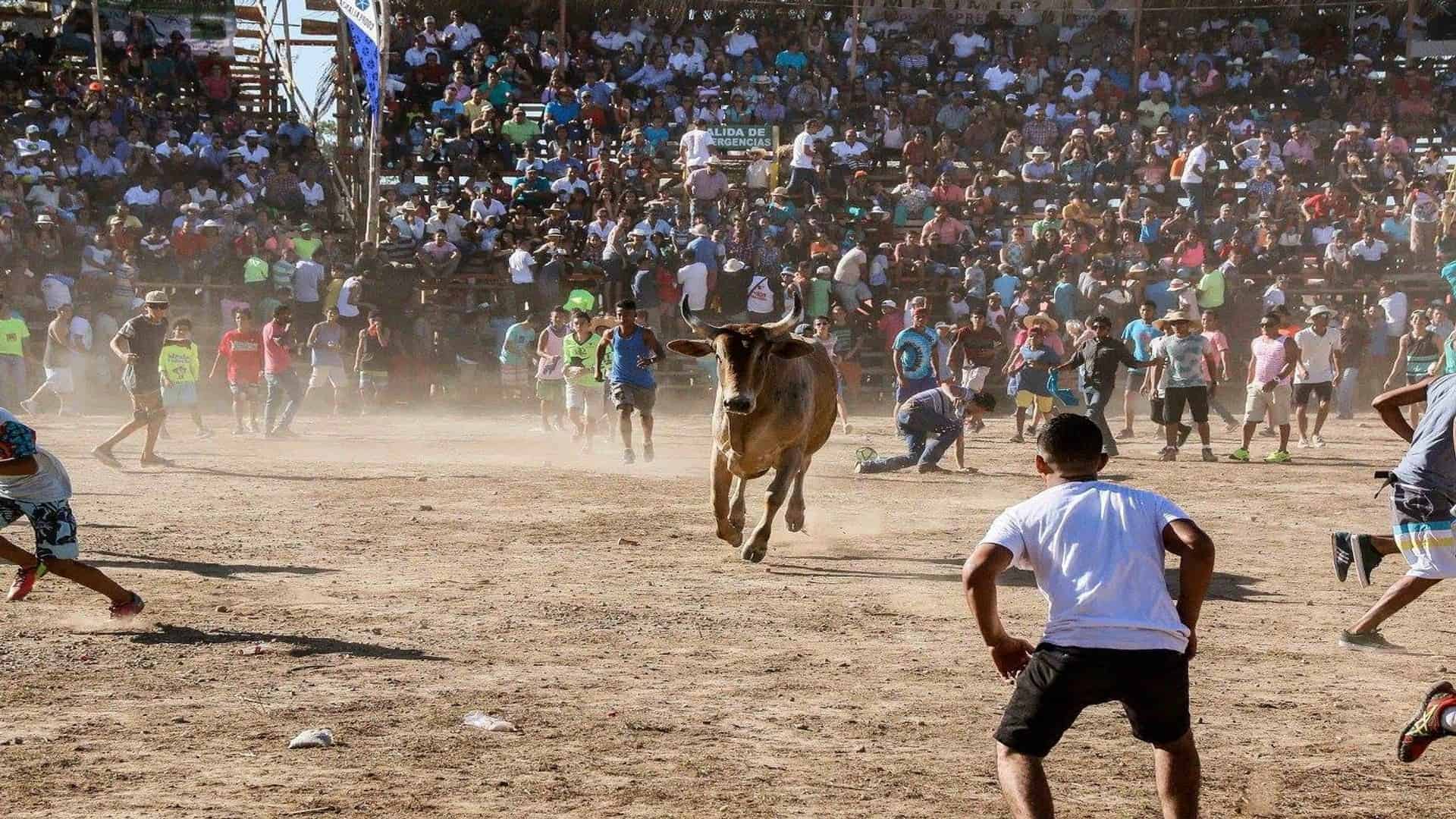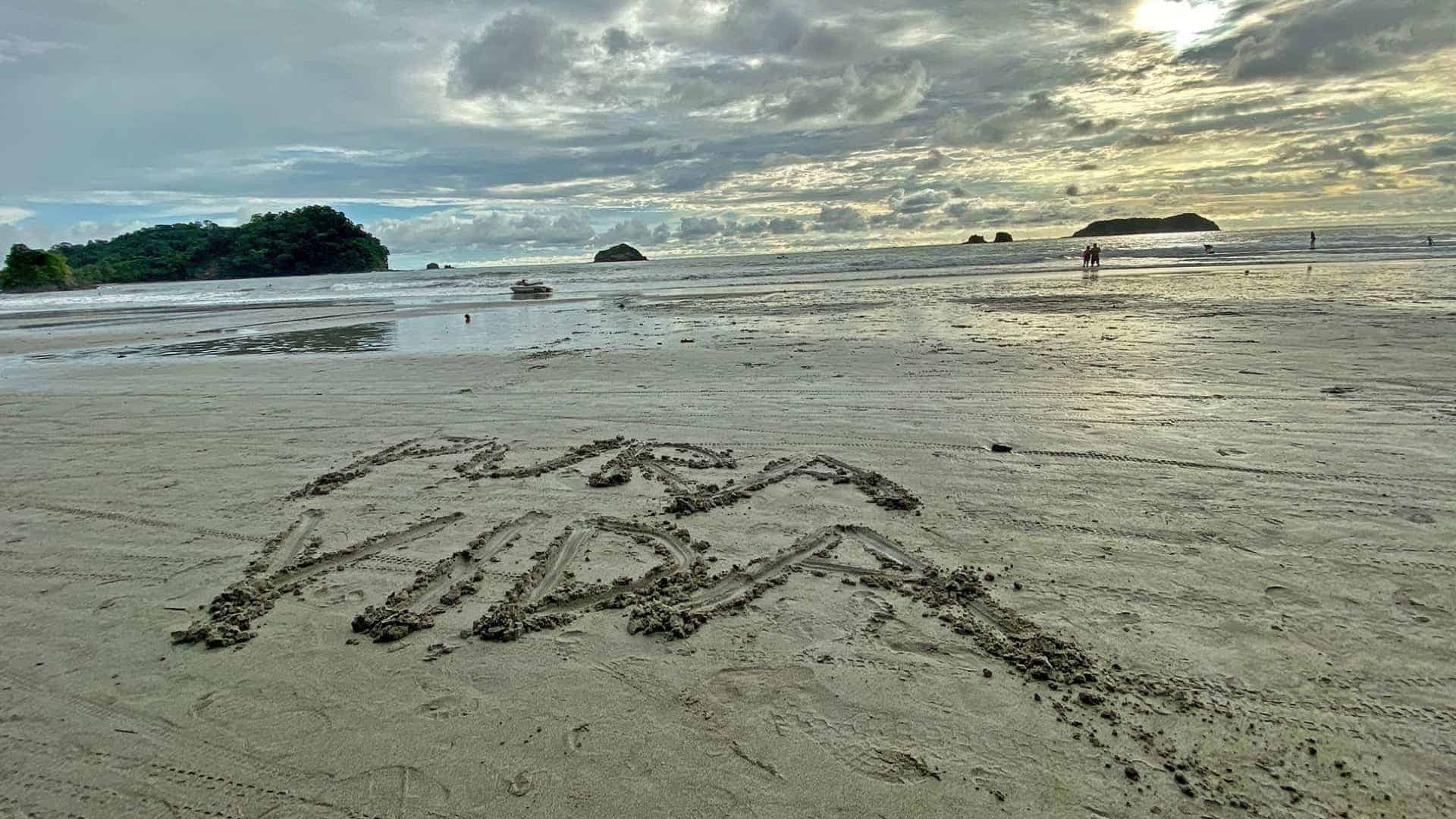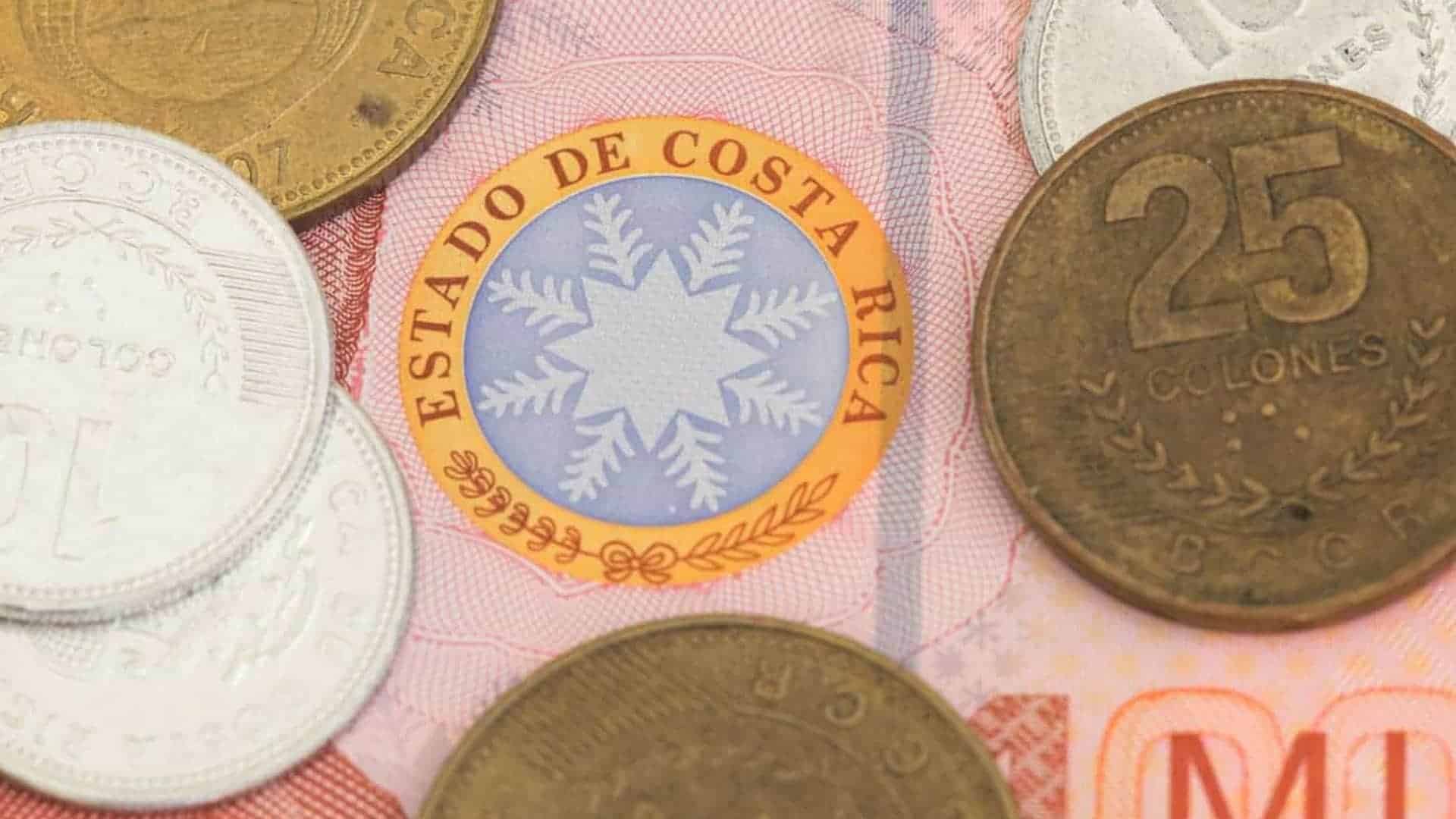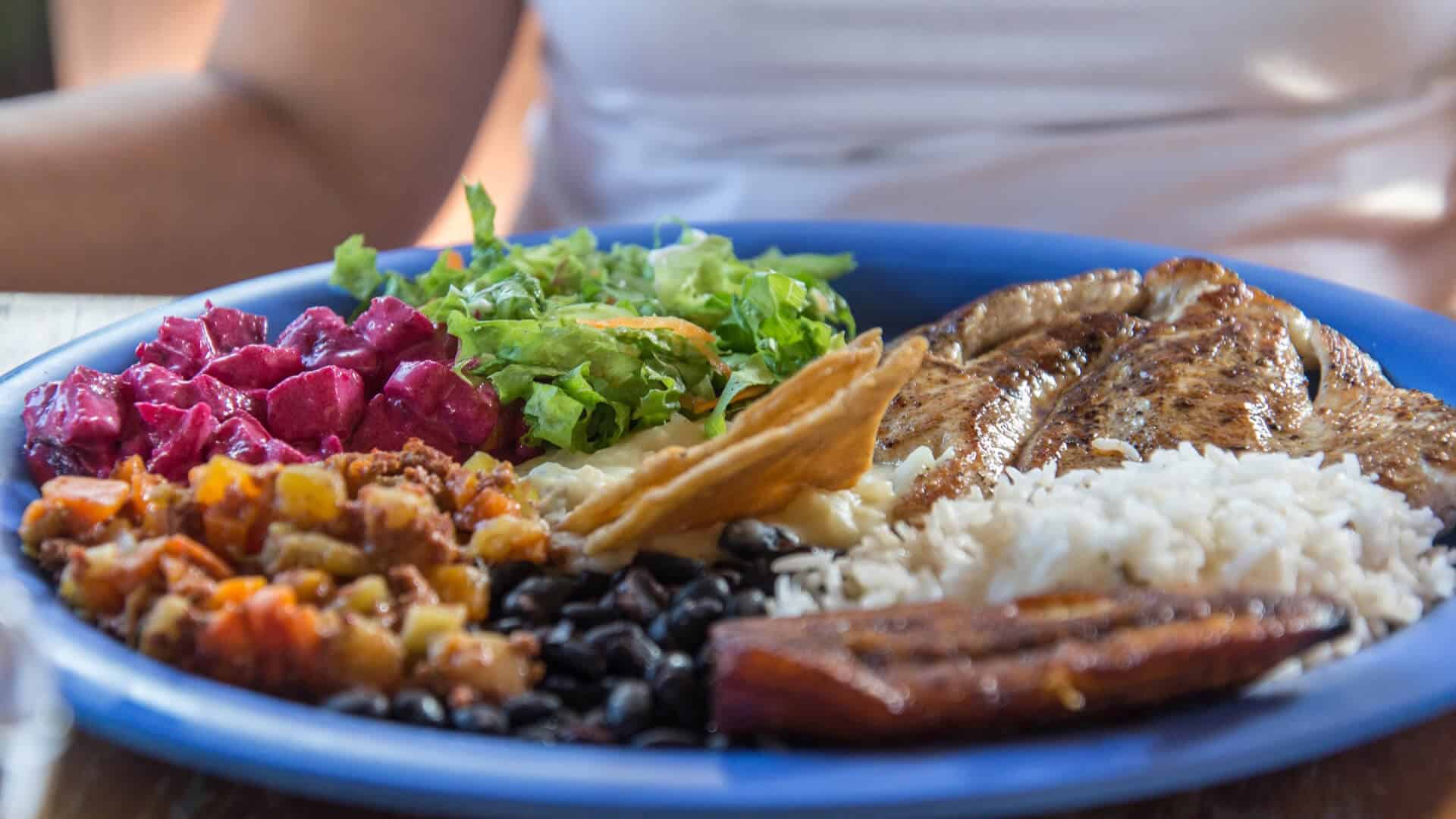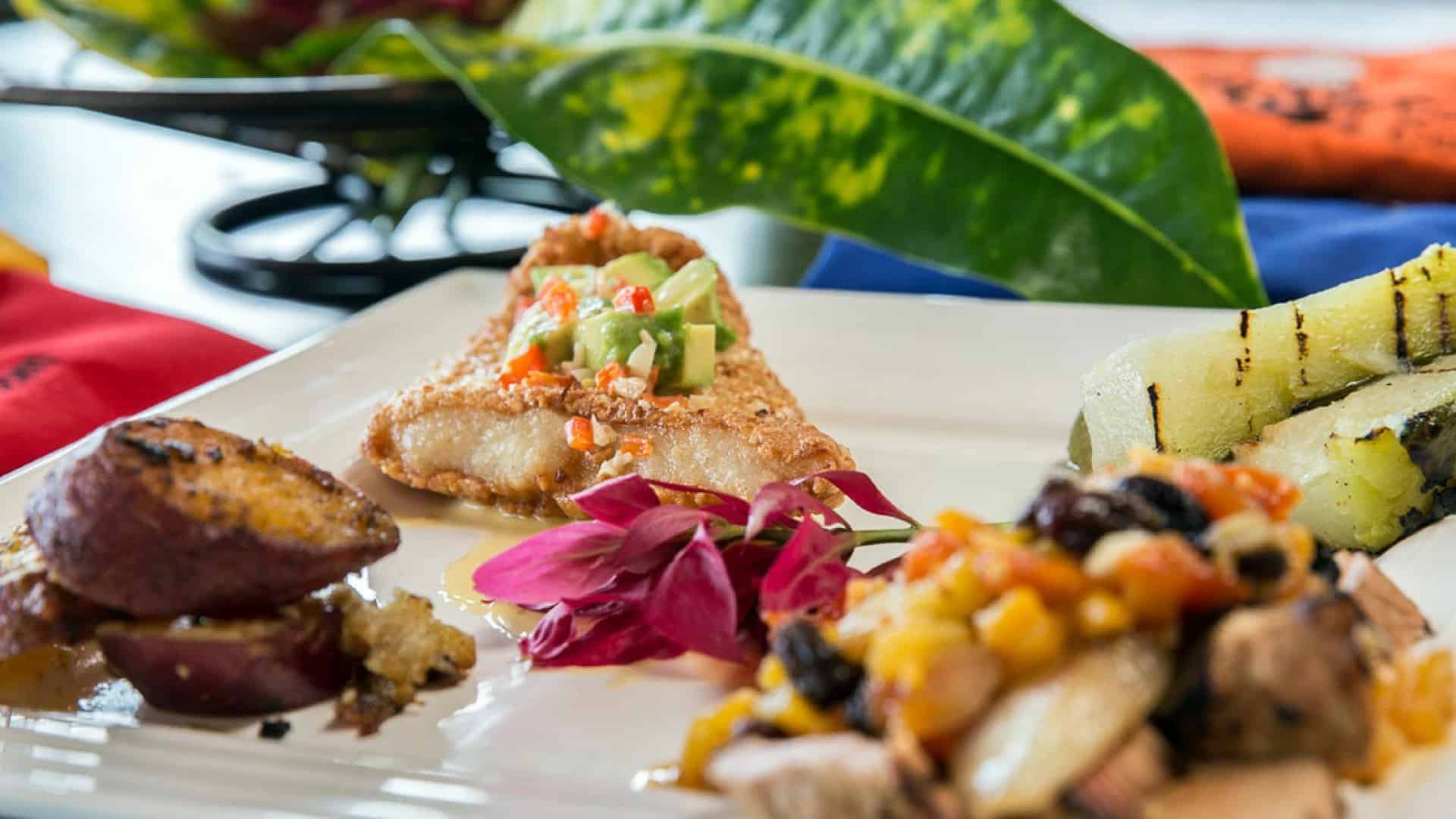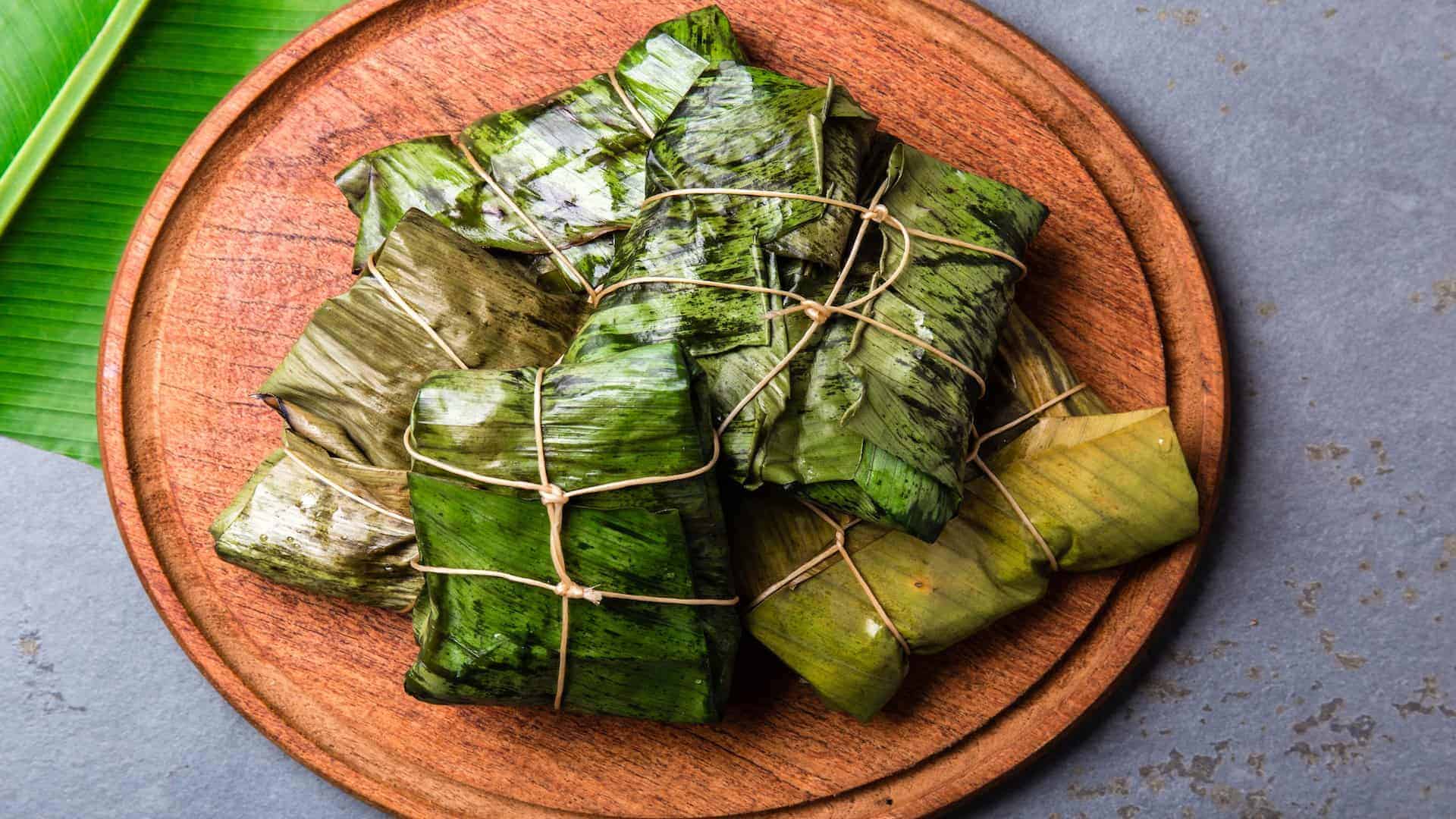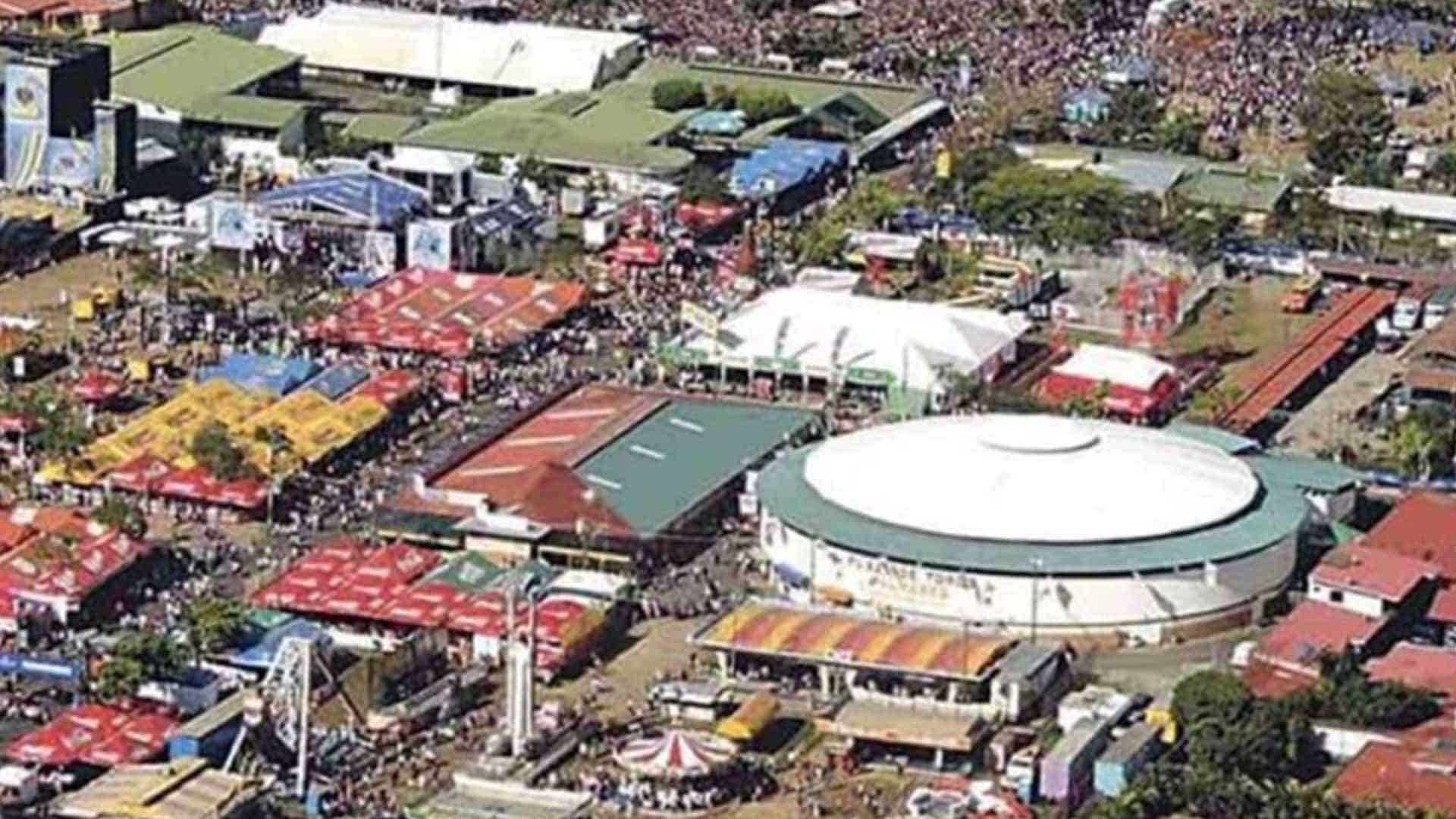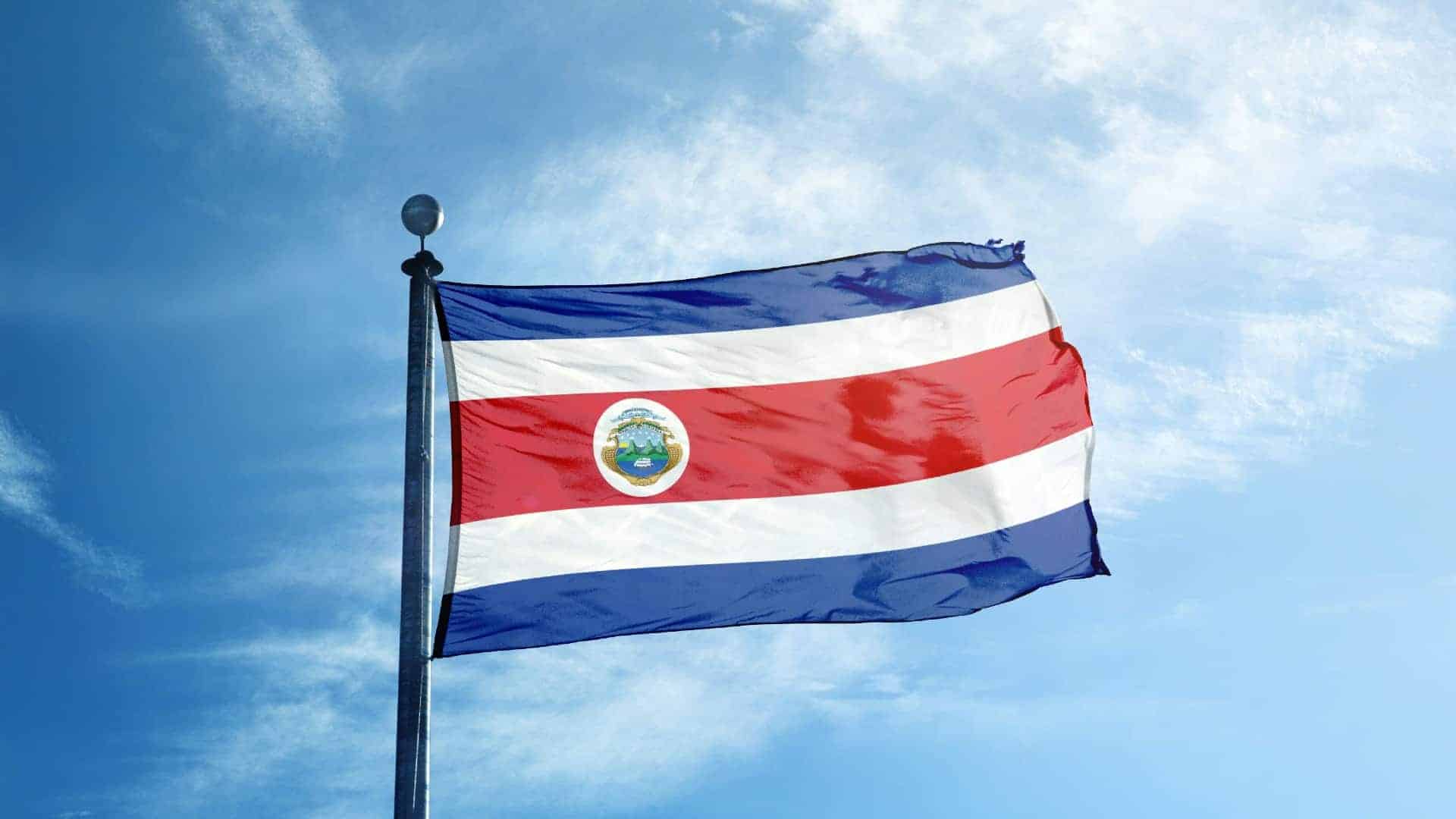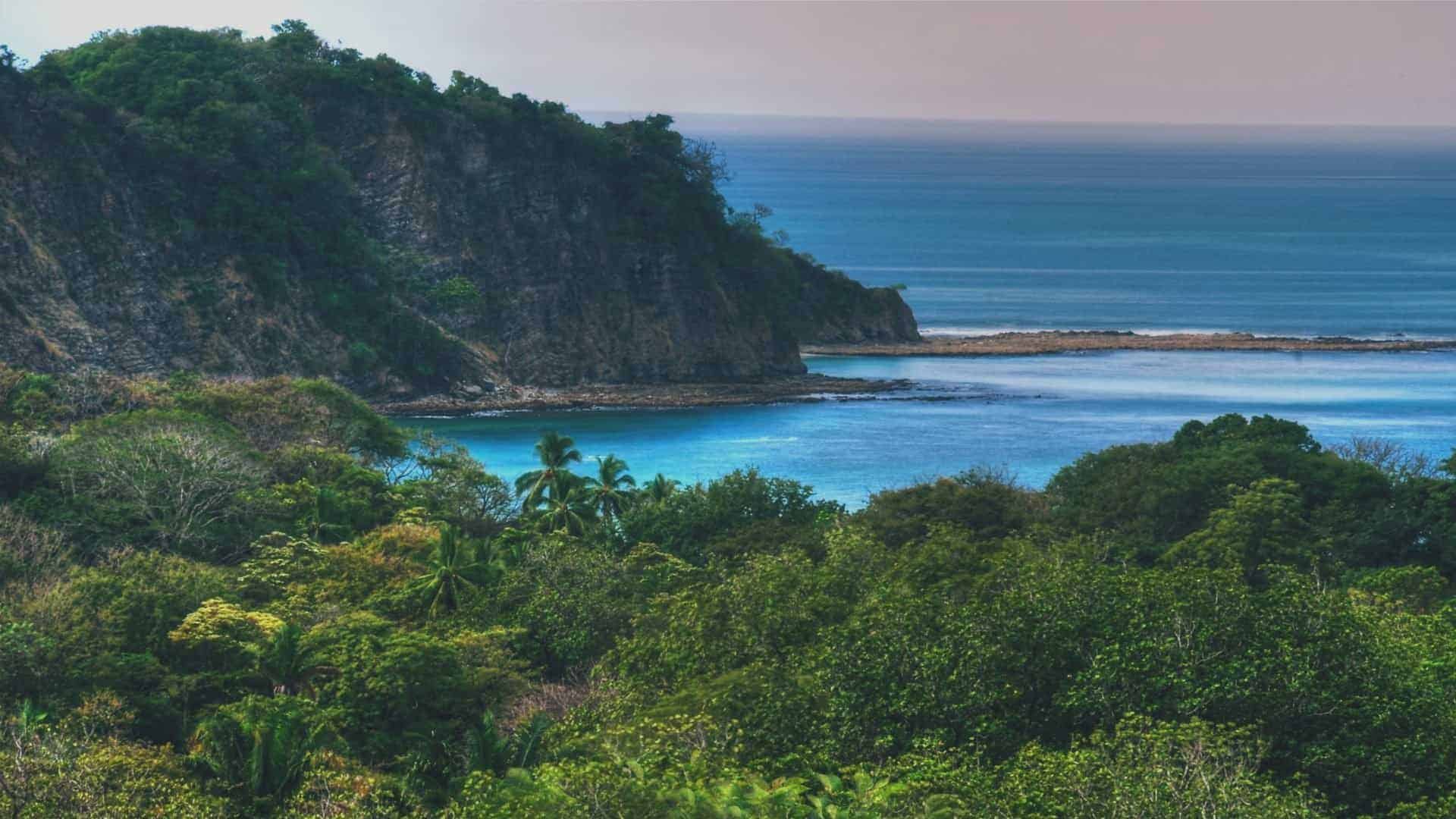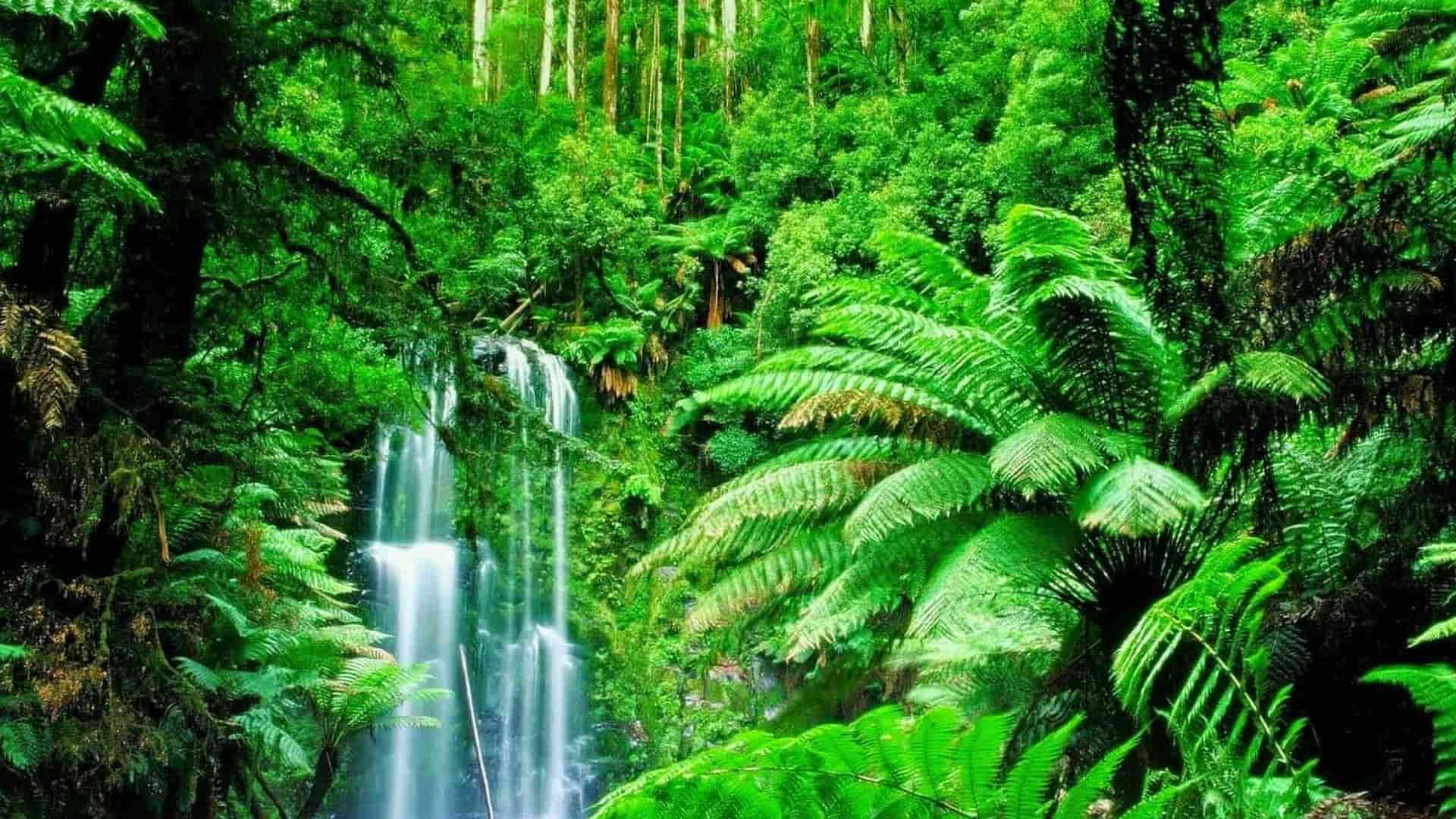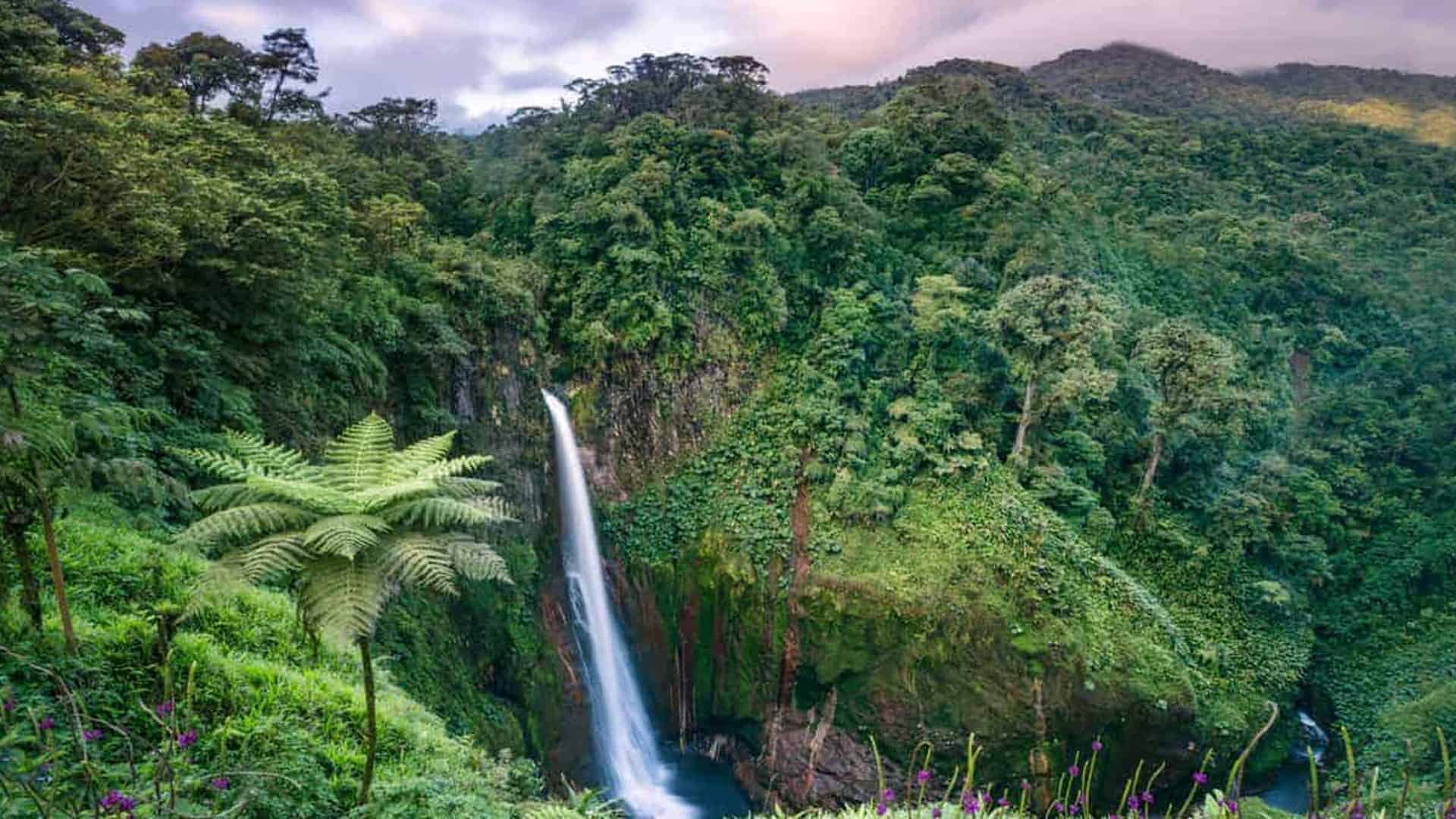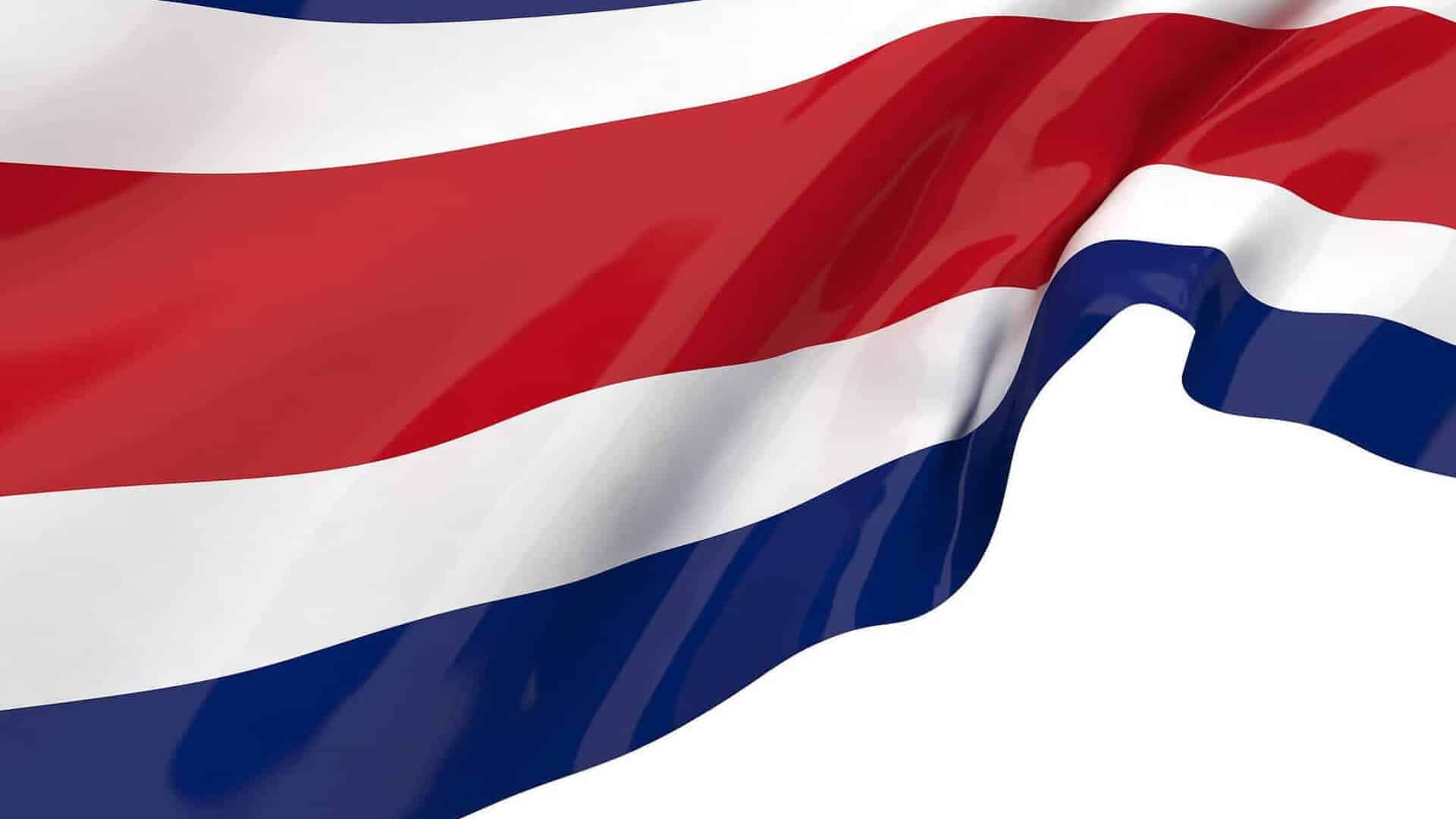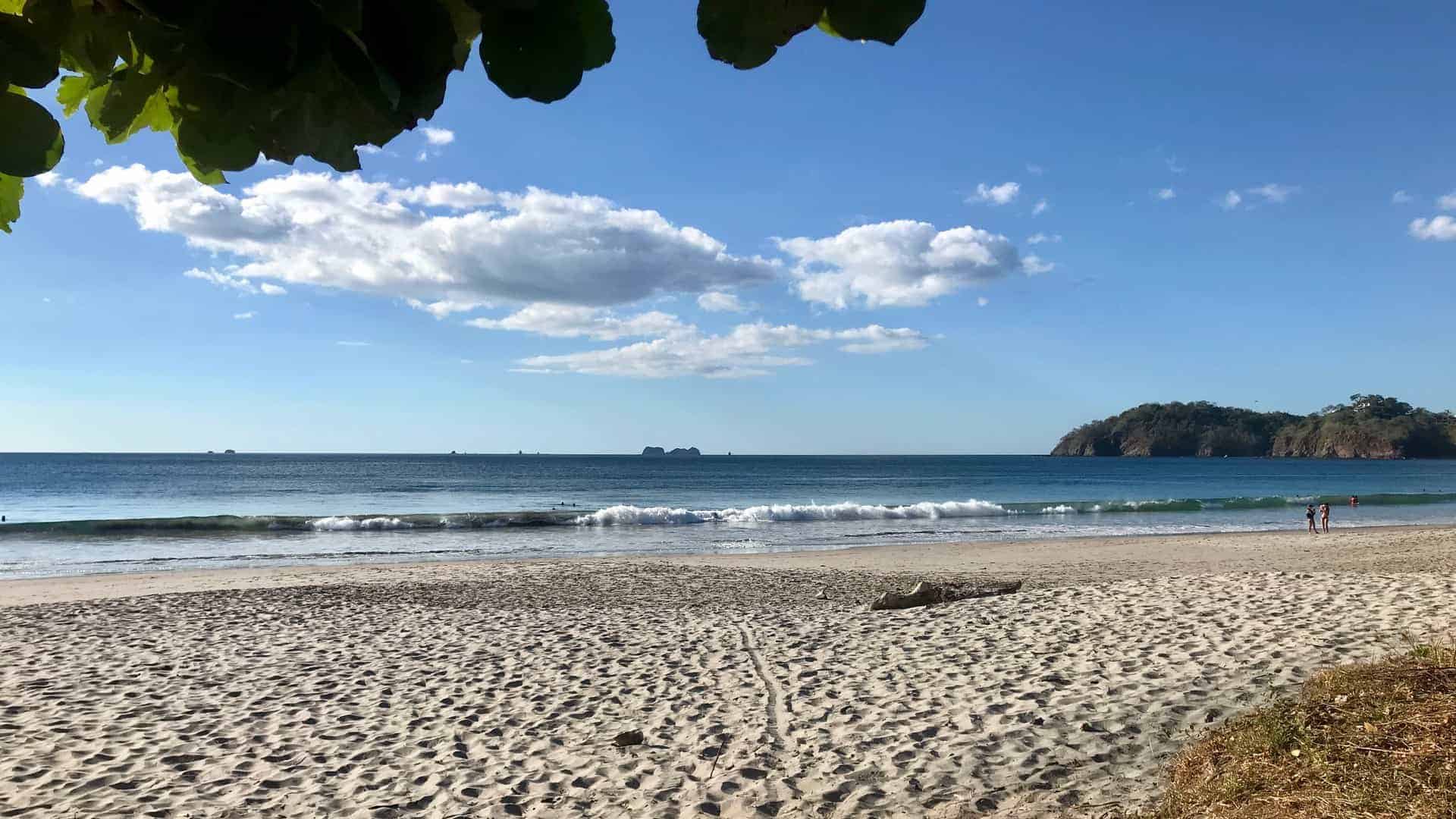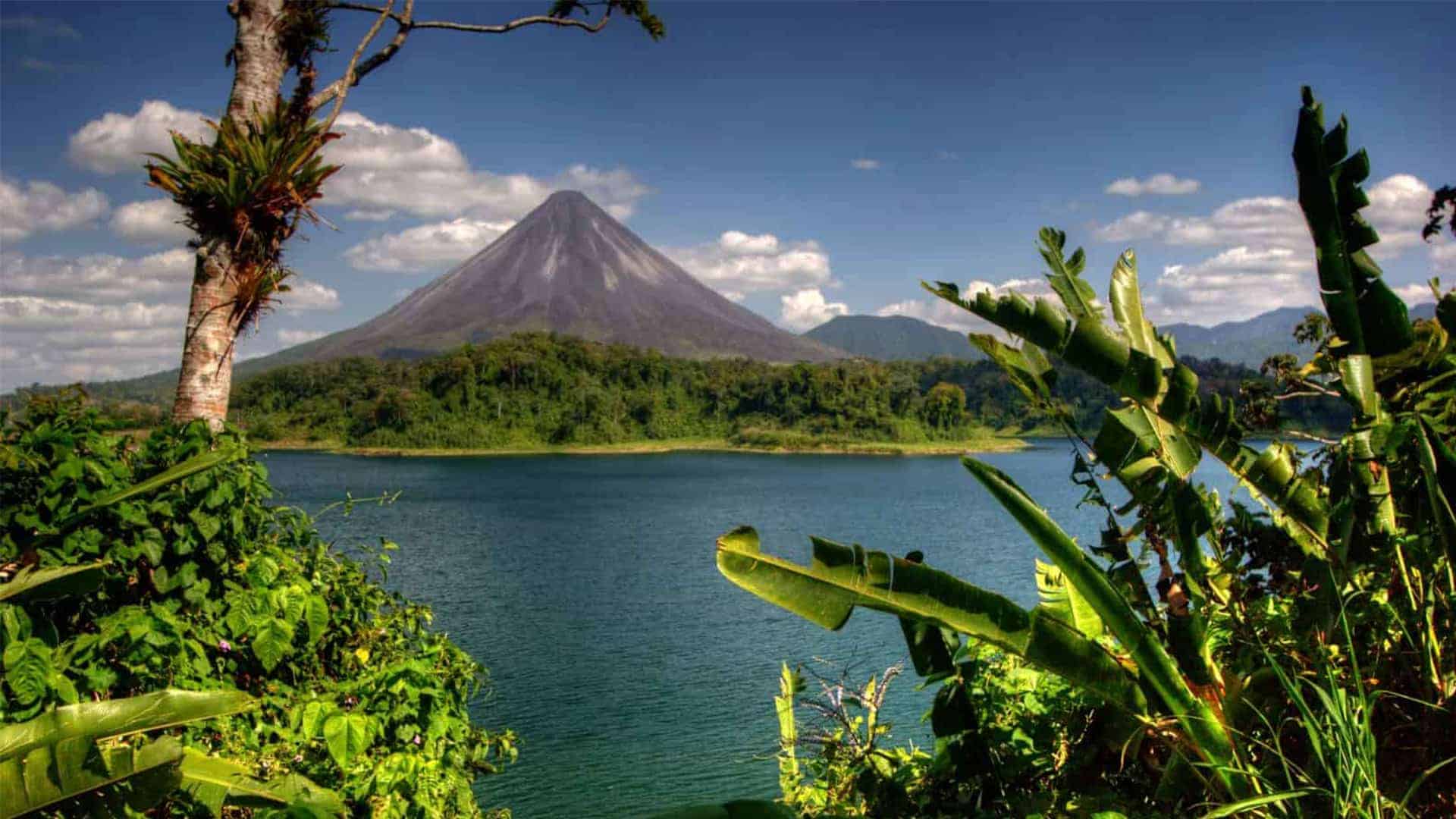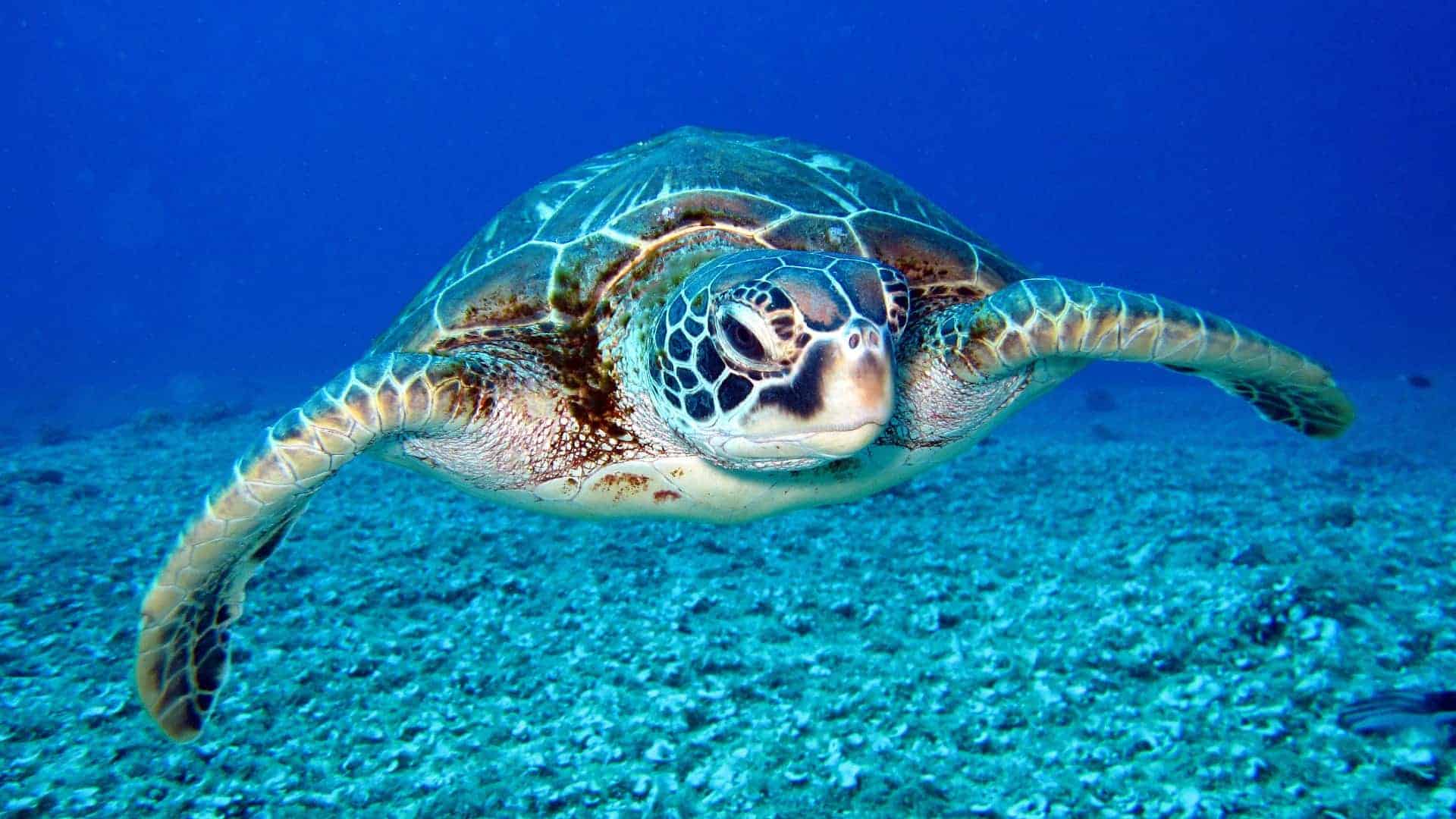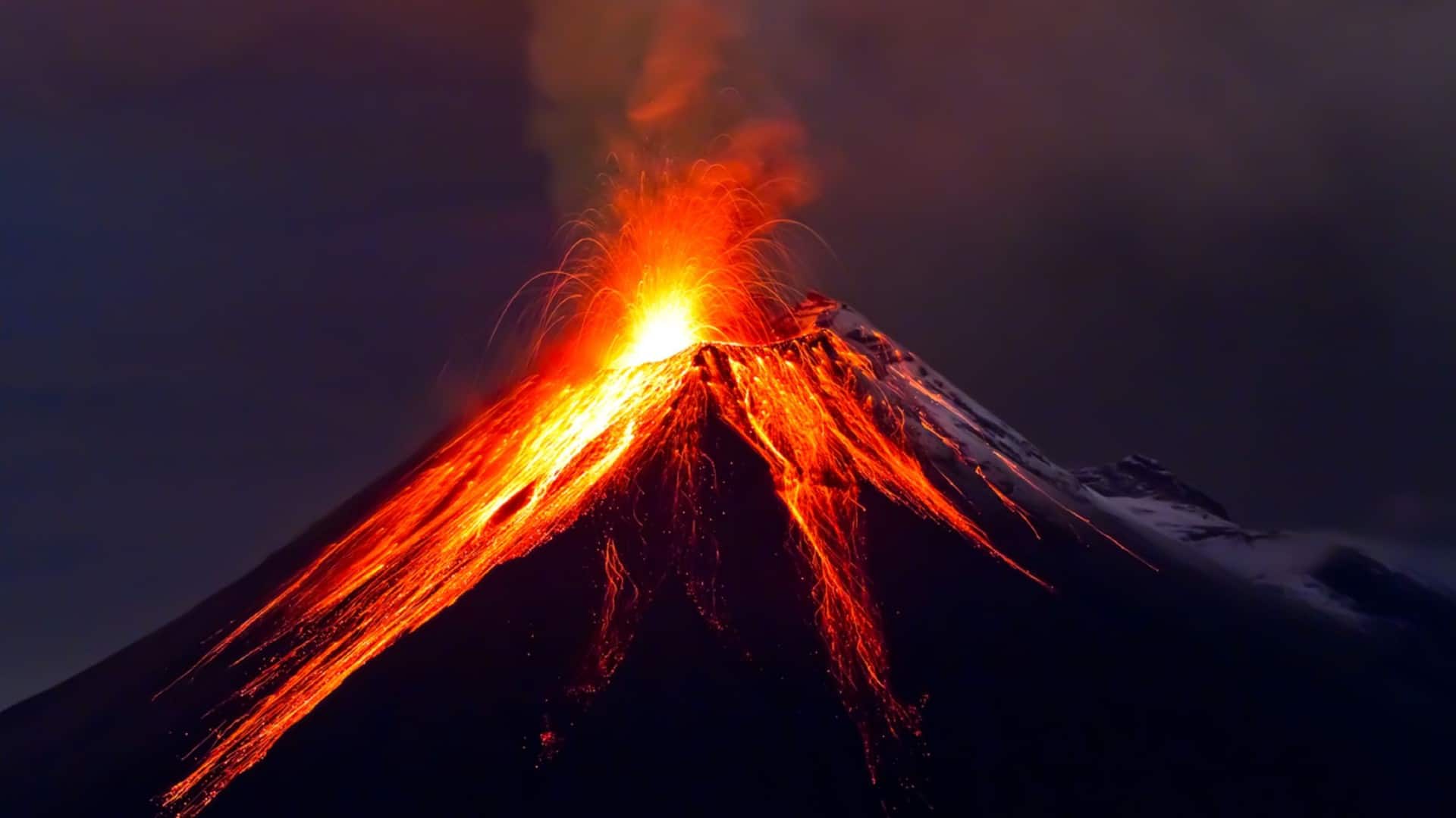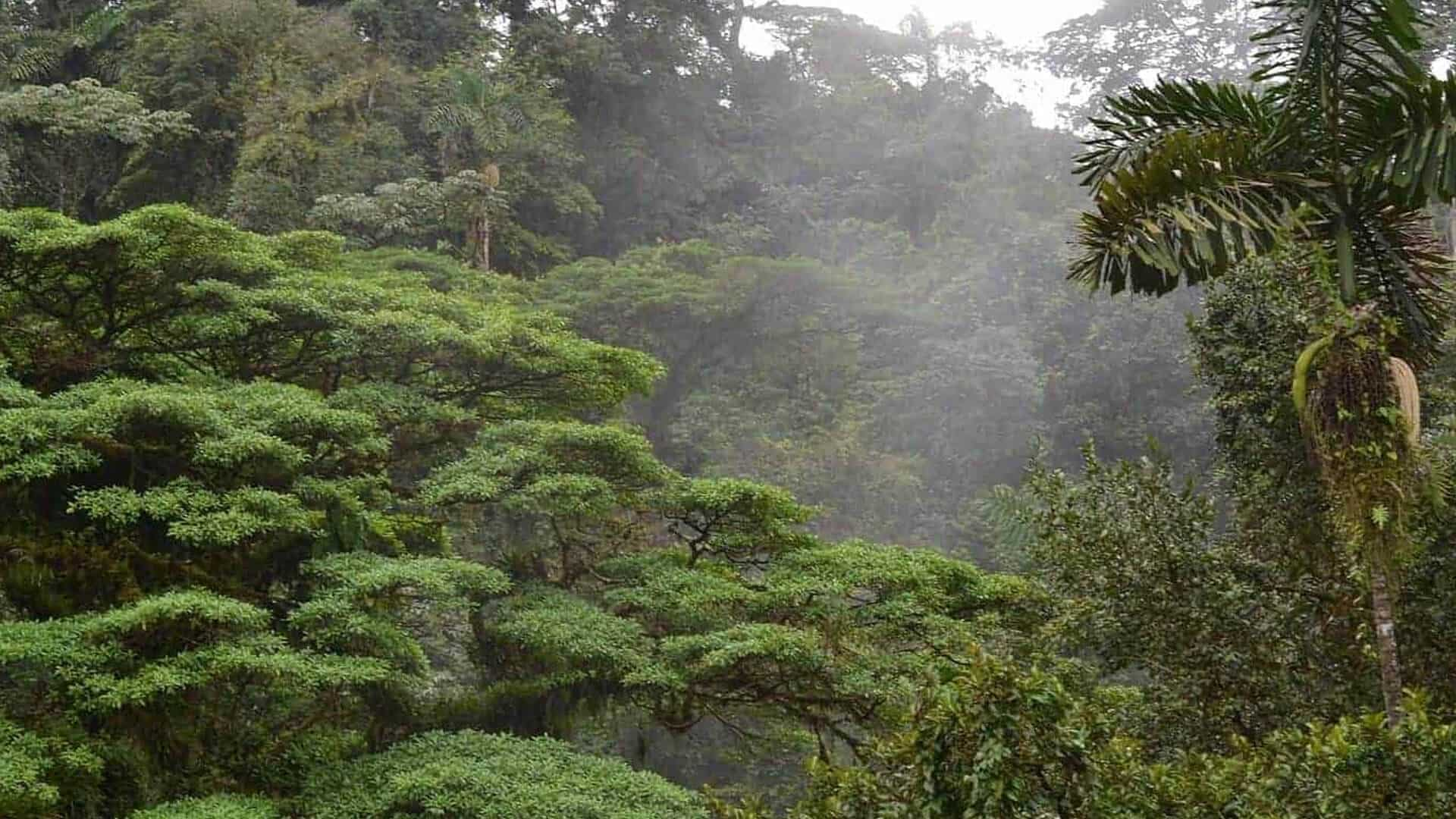explore costa rica
About Costa Rica
Experience the breathtaking beauty of Costa Rica’s lush rainforests, pristine beaches, and incredible biodiversity, while immersing yourself in a vibrant culture known for its warm hospitality and commitment to sustainability.
Don't forget to book your vacation rentals with us
Costa Rica is one of the most-visited countries in Central America and is best known for its beautiful beaches, active volcanoes, outdoor adventures, and biodiversity.
Before you visit Costa Rica, keep reading to learn everything you need to know about the country’s history, culture, weather, most popular cities, and other interesting topics!
History of Costa Rica
Costa Rica’s history began in 10,000 BCE when indigenous Costa Ricans lived in small groups joined under a cacicazgo (chiefdom) with a cacique or chief on top of the ladder. Christopher Columbus, the Italian explorer from Spain, discovered Costa Rica on his fourth voyage in 1502. Columbus nicknamed Costa Rica the “Rich Coast” because he believed the land was filled with precious metals after seeing natives wearing many gold jewelry. Spanish conquerors couldn’t find many riches in Costa Rica after all, causing them to abandon the country for more promising areas.
Cartago
The Spanish Crown returned to Costa Rica in 1563 to establish the village of Cartago, the country’s first permanent settlement. Costa Ricans lived under Spanish rule for over two and a half centuries. Costa Rica gained its independence from Spain on September 15th, 1821—the date when the República de Costa Rica was formed!
Coffee Exports
Costa Rican coffee was first exported in 1820. The country became a major hub for coffee and bananas after their cross-country railroad was completed in 1910.
Tourism
Today, tourism is the driving force behind Costa Rica’s economy and as of 2019, makes up about 11.5% of Costa Rica’s GDP. Tourism is the heartbeat of this country, bringing in a large amount of revenue and fueling its economic growth.
Government
Costa Rica’s government is a democratic republic. Unlike the dictatorships in many other Central American countries, they have not had a military in over seven decades and have experienced excellent political stability.
Related Articles About History of Costa Rica
- September 8, 2021
Culture of Costa Rica
Costa Rican culture demonstrates racial diversity. The Europeans, its indigenous people, and other ethnic groups from Jamaica and China have greatly influenced the country.
The country’s European influence is distinctly visible from its primary language, Spanish, to the architecture of many of the country’s iconic historic buildings. Costa Rica’s indigenous heritage shows more subtly in the country’s cuisine and art.
Costa Ricans are proud of their country and values. They believe that healthcare services and education should be freely accessible to all people. They are advocates for environmental conservation and sustainability around the world. Costa Rica is one of the few Latin American countries to name Catholicism as their official religion, and according to national statistics, between 52 and almost 55% of ticos belong to the Roman Catholic religion.
Costa Rica is often ranked among the top 20 happiest countries to live in, and the ticos are positioned #6 as the friendliest people in the entire world. Costa Ricans have an average life expectancy of 80 years old, and that number has been growing steadily since the early 1970s.
Related Articles About culture of Costa Rica
Language of Costa Rica
Costa Rica’s official language is Spanish. The ticos speak with a unique accent uncommon in other Central American countries. However, for non-native speakers, this Spanish dialect is much easier to understand. Additionally, a large portion of Costa Rica’s population speaks English as a second language.
In certain parts of Costa Rica, other languages besides the official language of Spanish are spoken. In Limón, many African descendants speak Limonese Creole, similar to Jamaican English, this dialect is called Mekatelyu or more commonly referred to as Patua. There are several indigenous languages recognized in Costa Rica, the top three and most relevant are:: maléku in the north-eastern, and bribri and cabécar near the Southern Caribbean coast.
Costa Rica’s best-known saying is “pura vida,” which translates to “pure life” in English. This phrase is a positive expression used to depict carefree feelings of happiness. Costa Ricans use this phrase to say, “thank you” or “you’re welcome.” It can also simply be used to say, “life is good!”
Related Articles About Language of Costa Rica
- September 29, 2021
Book Your
Costa Rica Vacation
Currency of Costa Rica
The Costa Rican Colon (CRC), named after Christopher Columbus, is Costa Rica’s currency. One colón is divided into one hundred céntimos. Banknotes come in denominations of ₡1,000, ₡2,000, ₡5,000, ₡10,000, ₡20,000, and ₡50,000 and the coins come in denominations of ₡5, ₡10, ₡25, ₡50, ₡100 and ₡500.
As a general rule of thumb, 5,000 CRC equals 10 USD, though this calculation can vary based on exchange rates. Many places in Costa Rica unofficially accept the US Dollar.
Related Articles About Currency of Costa Rica
Popular Foods in Costa Rica
Traditional Costa Rican food is popular among both locals and visitors alike! The national dish of Costa Rica, gallo pinto, includes black beans and rice seasoned with a combination of garlic, onions, cilantro, bell peppers, and coriander. Gallo pinto isn’t gallo pinto without a signature local sauce called Lizano. Usually, this dish is served for breakfast, with corn tortillas, sweet plantains and eggs on the side.
Another popular dish, casado, is traditionally served for lunch or dinner. It includes well-seasoned meat, like fish, chicken, pork or beef, with two or three sides that can vary from mixed greens, rice, beans, sweet plantains and picadillo (finely cut vegetables). Costa Rica’s most popular dessert isTres Leches, a vanilla sponge cake coated with three types of milk, as the name implies. It’s usually topped with whipped cream or meringue.
The country is also well-known for its coffee, produced in the Central Valley, and bananas, produced on the Caribbean coast, both a staple in Costa Rican cuisine.
Related Articles About Popular Foods in Costa Rica
- September 22, 2021
Facts & Myths about Costa Rica
Some interesting Facts About Costa Rica
- The Guaria Morada, a species of orchid, is the national flower of Costa Rica.
- The Costa Rican National Anthem was written by José María Zeledón Brenes and adopted in 1852 as one of Costa Rica’s national symbols
- The country’s highest mountain is Mount Chirripó, located in the Chirripó National Park. It stands at the height of 3,821 meters (12,536 feet)
- The Clay-Colored Thrush was named the national bird of Costa Rica in 1977
- The sloth is a national symbol of Costa Rica’s commitment to protecting forests and the endangered species that live in them.
- The Guanacaste Tree was named the national tree of Costa Rica in 1959
- Costa Rica is commonly mistaken as a country in South America. It is actually on the Central American isthmus, a strip of land with sea on either side
- Costa Rica’s Nicoya Peninsula is one of the earth’s five “Blue Zones,” where people tend to live longer, happier lives. Men who reach their 60th birthday in Costa Rica’s blue zone are more likely to have a longer life expectancy than the global average
Related Articles About Facts & Myths of Costa Rica
Book Your
Costa Rica Vacation
Weather in Costa Rica
Costa Rica is a tropical destination, and the country’s climate is divided into two seasons: the dry season and the rainy season.
Costa Rica’s dry season lasts from mid-December until the end of April. This season is the most popular time to travel to the country since the weather tends to be warm, sunny, and mild. Costa Rica’s rainy season, or green season, spans from May through November. Usually, visitors can enjoy smaller crowds, better hotel prices, and cooler weather during the green season.
If you decide to visit Costa Rica during the rainy season, it doesn’t mean your vacation will be a washout. The western side of the country bordering the Pacific Ocean experiences less rain during the green season. And the side of the country bordering the Caribbean Sea shines during the rainy season because you’ll be able to see tons of wildlife, like humpback whales and sea turtles.
Related Articles About Weather in Costa Rica
Environmental Policies & Ecotourism
On September 20th, 2019 the United Nations named Costa Rica a “Champion of the Earth” for its commitment to environmental policy leadership, inspiration and action, entrepreneurial vision, and science and innovation. Costa Rica aims to have an entirely green economy (including transportation, energy, construction, agriculture, and land usage) by 2050.
Costa Rica is also committed to protecting the country’s rainforests and wildlife. The Costa Rican government has preserved nearly 30% of its land in national parks to protect endangered plants and animals. Those who interfere with endangered species may face hefty fines or even imprisonment.
Because of Costa Rica’s commitment to the natural environment, the country is well-known globally for ecotourism, a type of tourism directed toward exotic natural environments intended to support conservation efforts.
Related Articles About Environmental Policies of Costa Rica
- December 3, 2019
Nature & Wildlife
Costa Rica has diverse topography, including rugged mountains, beautiful beaches, and lush forests.
The country has three major mountain ranges that extend the country’s length: the Guanacaste Mountain Range, Central Mountain Range, and Talamanca Mountain Range. Within these mountain ranges, you will find active volcanoes, like the Arenal Volcano and Rincon de la Vieja Volcano. On average, the mountain ranges span between 1,000 to 2,000 meters above sea level.
Since Costa Rica has coasts on both the Caribbean Sea and the Pacific Ocean, it shouldn’t surprise you that the country is home to over 300 beaches. Many of the country’s best beaches, like Playa Flamingo and Playa Conchal, are found in the Guanacaste Province.
Costa Rica has six different types of forests—tropical rainforests, cloud forests, tropical dry forests, mangroves, lowland rainforests, and riparian forests. Some famous tourist destinations to experience the diversity of Costa Rica’s forests include the cloud forests in the Monteverde Cloud Forest Reserve, the Caribbean lowlands in the Tortuguero National Park or Southern Costa Rica, and the tropical dry forests in the Guanacaste Province.
Much of Costa Rica’s nature is protected by the country’s national park system. The country’s most notable national parks, like the Corcovado National Park, Manuel Antonio National Park, and Arenal Volcano National Park, are all popular destinations.
Costa Rica is one of the world’s most biodiverse countries and is home to over 500,000 animal species. During your visit to Costa Rica, you can see mammals, like howler monkeys, sloths, and jaguars (in zoos) and tropical birds, like toucans, hummingbirds, and macaws.
Perhaps most popular among visitors are Costa Rica’s sea turtles. Costa Rica is home to four species of sea turtles: leatherback, green, hawksbill, and olive ridley sea turtles, and you can find them in protected parks across the country. You can also find thousands of insects, abundant marine life, and more animals in Costa Rica.
Related Articles About Wildlife of Costa Rica
Book Your
Costa Rica Vacation
Popular Cities & Towns in Costa Rica
San José
San José is the capital city of Costa Rica, located in the Central Valley. It is the country’s largest city with a population of roughly 334,000 people. San José is known for its world-class museums, like the Pre-Columbian Gold Museum and Jade Museum, beautiful parks, like the Parque Nacional Braulio Carrillo and Parque La Sabana, and historical sites, like the Teatro Nacional.
Cartago
Cartago was the capital of Costa Rica until it lost a brief civil war with San José in 1823. It’s now the third-largest city in Costa Rica, with just over 150,000 inhabitants, and is best known for the Shrine of La Negrita at Our Lady of the Angels Basilica.
Liberia
Liberia is the largest city in Guanacaste and is located on the Nicoya Peninsula. This city offers an excellent launching point for beaches along the Pacific Ocean, like Playa del Coco and Playa Hermosa. It is also home to the Rincón de la Vieja Volcano National Park. Liberia has the second international airport in Costa Rica, Daniel Oduber, which allows tourists to land directly in one of the most important tourist areas the country has to offer.
Jacó
Jacó is a small seaside town on the Central Pacific coast, best known for its surfing, beaches, and nightlife. It is popular among visitors for its proximity to popular parks, like the Carara National Park and Manuel Antonio National Park
Monteverde
Just shy of 5,000 inhabitants, Monteverde is a small village in Puntarenas Province in Costa Rica. There aren’t many people who live in Monteverde, but this small town is a popular tourist destination because of the sprawling tropical forest located in the Monteverde Cloud Forest Preserve
La Fortuna
La Fortuna is a village in Costa Rica with a population of just below 20,000 people. However, La Fortuna is a top-rated tourist destination despite its size. It’s the home of Arenal Volcano National Park and offers ample hiking trails, hot springs, and beautiful waterfalls, like La Fortuna Waterfall.
FAQs
A Few Things Guests
Normally Ask About Costa Rica
Compared to other neighboring countries in Latin America, the Republic of Costa Rica has a relatively equal distribution of wealth. According to common economic indicators, like CPI and GDP, Costa Rica has shown steady growth over the past few decades.
Costa Rica is one of the Latin American countries located in Central America. It borders Nicaragua to the north, Panama to the south, the Pacific Ocean to the west, and the Caribbean Sea to the east.
Costa Rica is filled with diverse natural beauty, including lush rainforests, beautiful beaches, cloud forests, active volcanoes, relaxing hot springs, and more.
